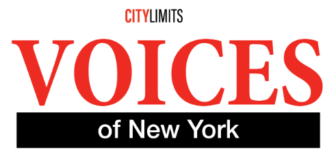
Courtesy Sing Tao Daily
SOMOS Community Care and Congresswoman Grace Meng’s office released a report on the state of Chinese New Yorkers’ health on Nov. 18.
Read the original story in Chinese at Sing Tao Daily
Translated by Rong Xiaoqing from Chinese
Many Chinese New Yorkers are not as healthy as they perceive themselves to be, and the community faces a number of barriers to obtaining proper healthcare, according to a report released Nov. 18 by SOMOS Community Care, a physician-led nonprofit network of community care providers in New York City, together with Congresswoman Grace Meng’s office.
The report, titled “State of Chinese Health in New York City,” surveyed Chinese physicians and patients in various neighborhoods, highlighting the challenges low-income Chinese residents face when it comes to awareness of their own health status, as well as their access to high-quality healthcare and health education. The researchers hope to offer physicians and decision-makers the opportunity to work out potential solutions as the population of Chinese New Yorkers continues to increase.
Dr. Henry Chen, president of SOMOS, said the health status of Chinese New Yorkers is frequently misperceived, neglected and oversimplified. He said Asian-Americans are often believed to be “model minorities,” but most are average New Yorkers who face challenges when it comes to their health. The problems revealed in the report have been prevalent in the community for a long time, and Chen hopes its findings can provide a practical route for the Chinese community to seek better health care.

Voices of New York spotlights ethnic and community reporting from around the city. Click here to read more.
The report found that while 80 percent of respondents believed they were physically healthy and had a healthy lifestyle, 70 percent had been diagnosed with a health problem. Only 52 percent of respondents said they were not a smoker, and only 43 percent said they were careful with their diet. More than 60 percent of Chinese New Yorkers have limited English proficiency, and 50 percent of them said they don’t understand their physicians even if the physicians speak Chinese.
Those polled cited a number of barriers that stop them from going to see a doctor: 55 percent pointed to the high costs of healthcare, as well as the need to be accompanied by their children or someone they trust when going to an appointment. Of those surveyed, 49 percent said they can’t get time off to see the doctor, and 44 percent said it was because their commute to the doctor’s office is difficult.
The survey found 90 percent of respondents reported having health insurance, while 70 percent said their family doctors speak Chinese. More than half said they have a positive perception of the healthcare system while 65 percent said they often go to see their family doctors.
The report also found that many Chinese patients prefer to use traditional Chinese herbs for treatment, and consider Chinese medicine an affordable and familiar way to pursue health without conflicting with their cultural beliefs. And although a combination of Western and Chinese medicine often benefits patients, Chinese medicine can sometimes become a barrier to seeking proper health care, the report notes. It calls for strengthening programs that can help reduce misunderstandings about Western medicine and encourage Chinese New Yorkers to seek professional healthcare, such as continuing the state’s Delivery System Reform Incentive Payment (DSRIP) to build a patient-focused healthcare network that provides better care with lower costs.
The DSRIP was part of the Medicaid redesign policies announced by Gov. Andrew Cuomo in 2015, and it requires that providers collaborate by forming a Performing Provider System (PPS) to implement innovative projects focused on system transformation. So far, the program has achieved a 34 percent reduction in avoidable hospital use as well as reduced emergency room use, among other positive results.
The SOMOS report also notes how Chinese-speaking community health care facilitators can play a significant role in helping patients obtain insurance, find doctors and access other resources they need. Its other recommendations include working with
community-based organizations on outreach, supporting community-based food and farmers markets to promote healthy diets, expanding programs that supply nutritious food to low-income Chinese families, and allocating funding for health education.








